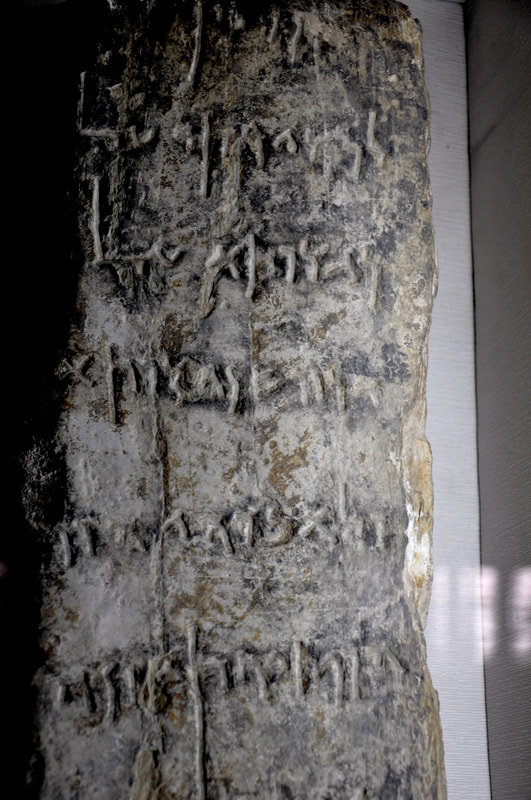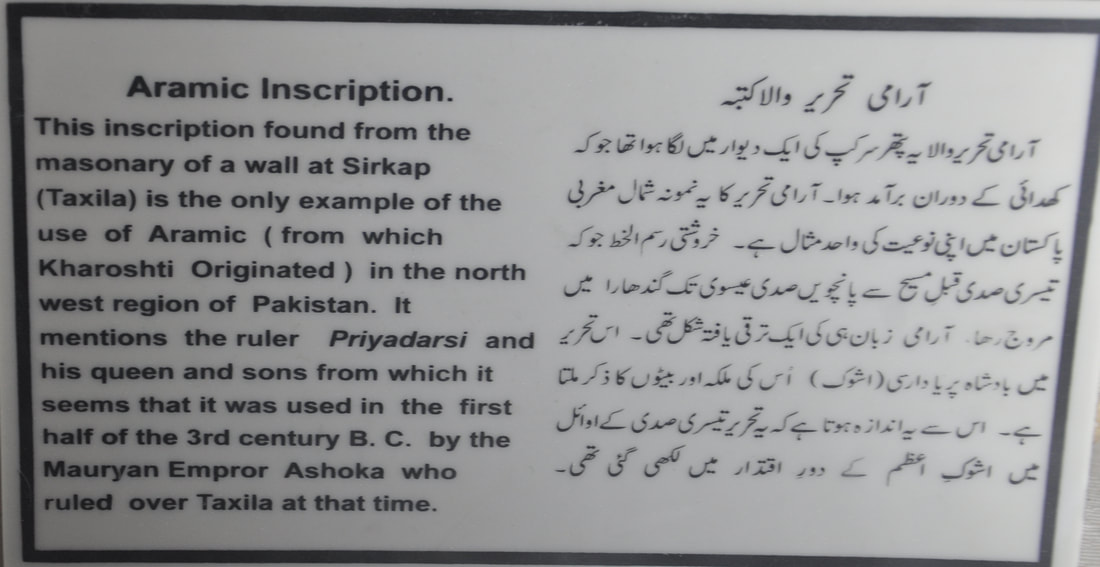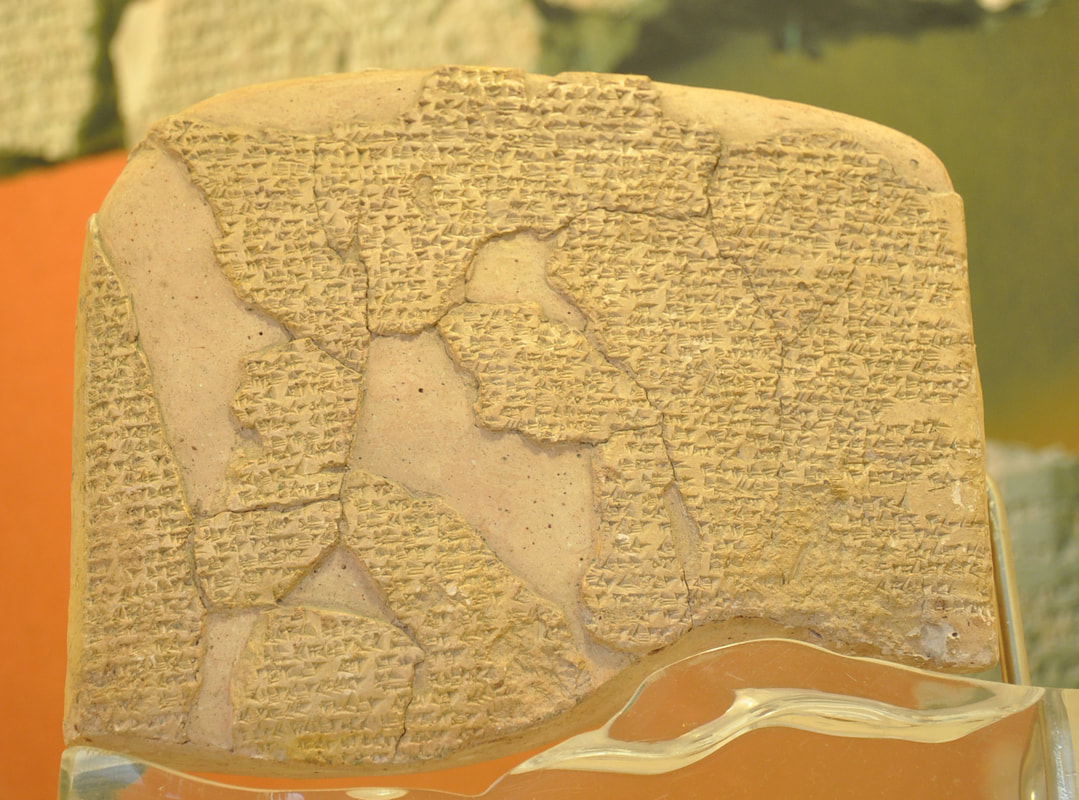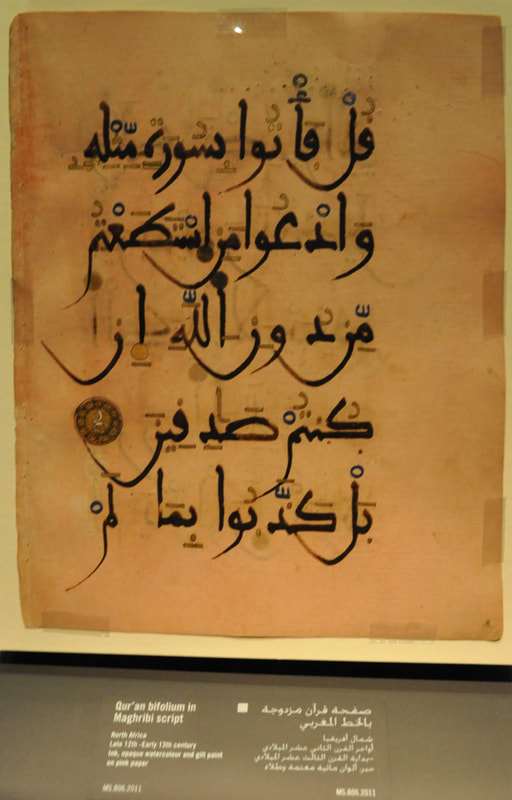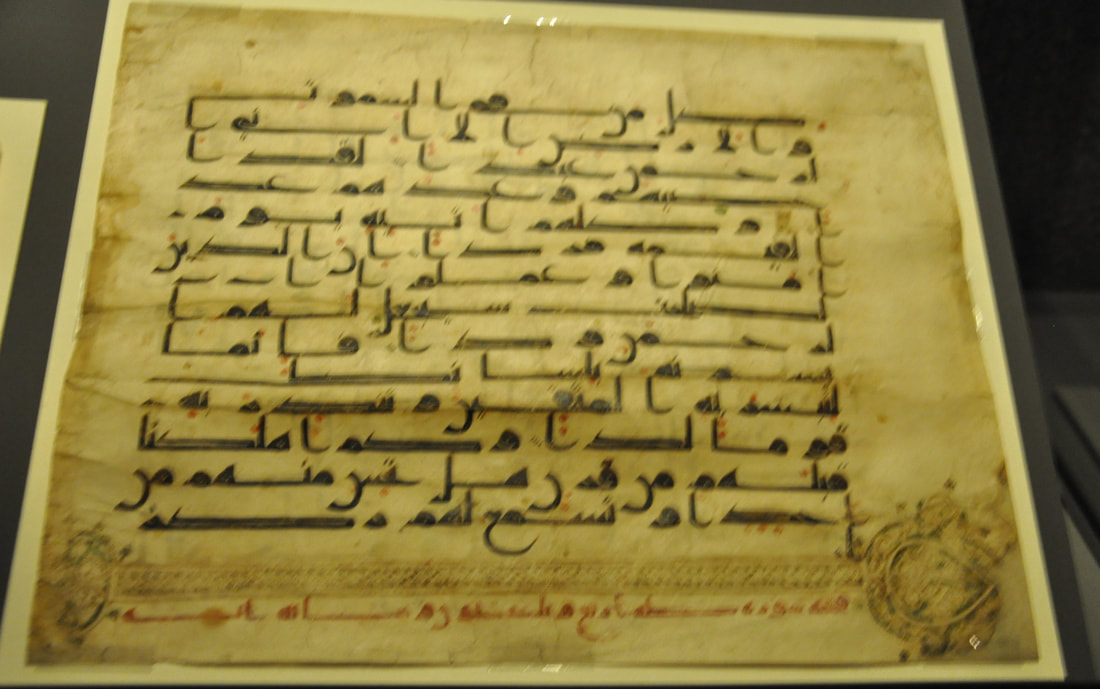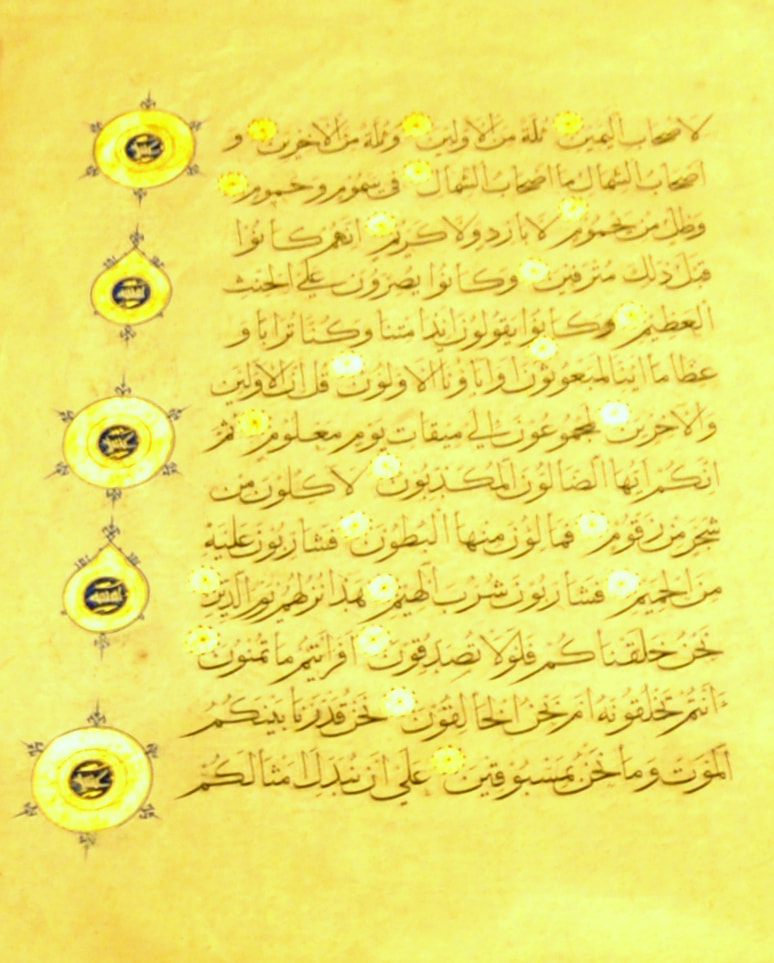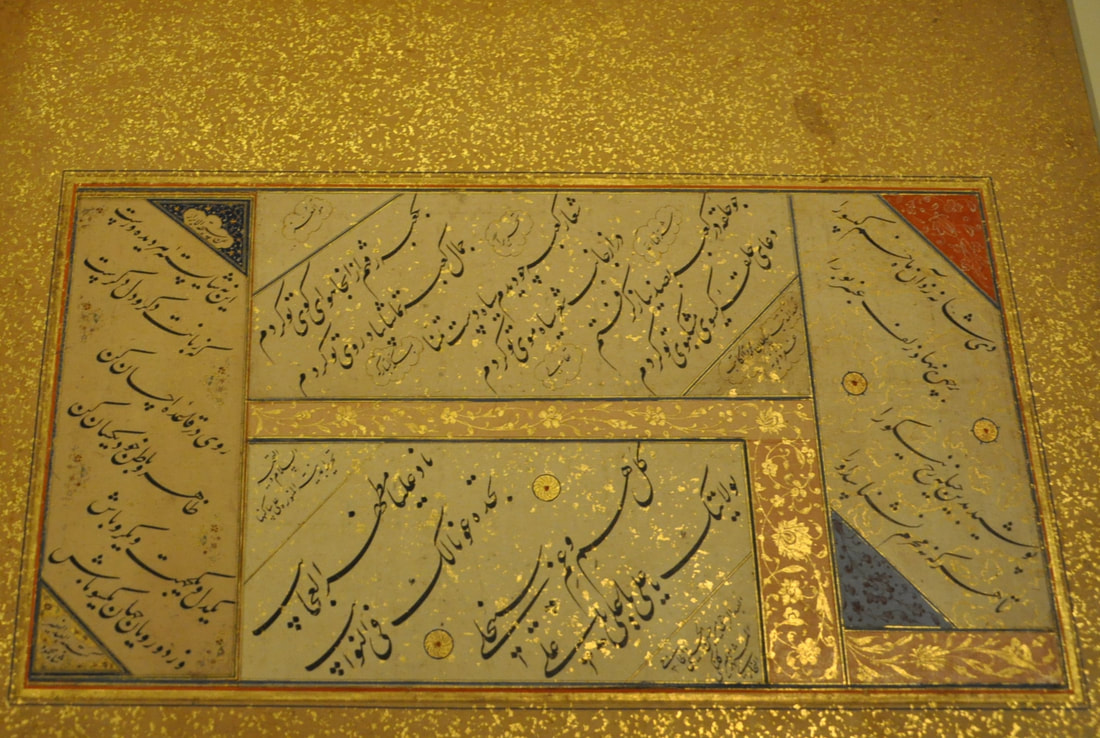Silk Road Ancient Language Learning Resources &
Silk Road Ancient Languages - College and University Programs
“Whoever has walked with truth generates life.”
An ancient Sumerian proverb
http://www.sumerian.org/proverbs.htm
An ancient Sumerian proverb
http://www.sumerian.org/proverbs.htm
Note: This is a very short and incomplete list. Yet, It’s a start. Visitors to Silk Road Virtual University are welcome to contribute to this (and any) page to make it more complete. Please write to: editor@silkroadvirtualuniversity.org
CONTENTS (Below)
MAJOR MULTI-FACETED RESOURCES
Palaeolexicon is a tool for the study of ancient languages. Its name derives from the Greek words palaeo meaning 'old' and lexicon meaning 'dictionary'. If you're interested of the ancient world and its languages, then this is a site for you. It is a place for people who love historical linguistics and ancient history. http://www.palaeolexicon.com/Languages/Index
Absolutely mind-boggling (free) link list to Mesopotamian languages and literature: http://www.sumerian.org/sumlinks.htm (lexicon, articles, books, lectures, DVDs, CDs and a lot more)
World Atlas of Language Structures Online: http://wals.info/languoid
Encyclopedia of World Ancient Languages, edited by Roger D. Woodard www.cambridge.org/linguistics http://assets.cambridge.org/052194/7936/full_version/0521947936_pub.pdf
Wikipedia has an interesting list of ancient languages with links: https://en.wikipedia.org/wiki/Category:Ancient_languages
For a excellent list of different types of writing systems associated with different languages, with links, (Logographic, Logophonetic, Syllabic, Consonantal Alphabet or Abjad, Syllabic Alphabet or Abugida, and Segmental Alphabet) see: http://www.ancientscripts.com/ws_types.html
Oxford University Language Center: Ancient Languages (resources) http://www.lang.ox.ac.uk/ancient-languages#collapse1-0
To date, records of 28 different languages have been discovered (just in) in the Tarim Basin (northwest China).
The Tarim Basin was a multi-cultural area, even before the height of the Silk Road. So it is likely that residents would have known and used several languages. The Iranian language called Sogdian was probably used as a common language by different cultures trading on the Silk Road. While dozens of languages were found in the Tarim Basin, the most common were Khotanese (koh-tah-NEES), Tocharian (toh-KAIR-ee-an), Sogdian, and Chinese. Many of the languages were also known in other regions of the world, but Tocharian was unique to the area, indicating that it was perhaps a native language. While questions remain over the identities of the inhabitants of this region, the written records they left behind provide clues to the many languages that were used and possibly spoken there. https://www.penn.museum/silkroad/exhibit_daily_life.php University of Pennsylvania Museum of Archaeology and Anthropology
An interesting ancient language map can also be found on:
https://www.scribblemaps.com/maps/view/Silk_Road_languages/BA8vinWzhn
LEARN ANCIENT LANGUAGES:
Akkadian
Akkadian was a Semitic language spoken in Mesopotamia (modern Iraq and Syria) between about 2,800 BC and 500 AD. It was named after the city of Akkad and first appeared in Sumerian texts dating from 2,800 BC in the form of Akkadian names. http://www.omniglot.com/writing/akkadian.htm This site has many excellent free resources – including a short dictionary, and links to many other ancient language sites.
Akkadian Lexicon: http://www.assyrianlanguages.org/hittite/en_lexique_akkadien.htm
https://en.wikipedia.org/wiki/Akkadian
Anatolian
The Anatolian languages are a family of extinct Indo-European languages that were spoken in Asia Minor (ancient Anatolia - now Turkey), the best attested of them being the Hittite language (see Hittite below). Others include: Palaic, Luwic, Cuneiform Luwian, Hieroglyphic Luwian, Lycian, Milyan, Carian, Sidetic, Pisidic, & Lydian (Adapted from: https://en.wikipedia.org/wiki/Anatolian_languages)
Learn how to write in Cuneiform. http://www.carolineludovici.com/learn-how-to-write-cuneiform.html
Aramaic
Part of the Northwest Semitic group, which also includes the Canaanite languages such as Hebrew and Phoenician. The Aramaic alphabet was widely adopted for other languages and is ancestral to the Hebrew, Syriac and Arabic alphabets. https://en.wikipedia.org/wiki/Aramaic_language
http://www.deadseascrolls.org.il/home
Assyrian
Assyria was the region in the Near East which, under the Neo-Assyrian Empire, reached from Mesopotamia (modern-day Iraq) through Asia Minor (modern Turkey) and down through Egypt. https://www.ancient.eu/assyria/
http://www.learnassyrian.com/assyrianlibrary/assyrianbooks/Language/01%20Aramaic%20(The%20Ancient%20Languages%20of%20Syria-Palestine%20and%20Arabia).pdf Free pdf download
http://www.omniglot.com/writing/assyrianneoaramaic.htm
Babylonian
http://www.helsinki.fi/~whiting/intbab.html Many free downloads
https://www.amazon.com/Complete-Babylonian-Teach-Yourself-Paperback/dp/0071747370 ($14)
Chinese (Ancient)
History of Chinese writing: http://www.ancientscripts.com/chinese.html
Chinese Language History overview: https://www.todaytranslations.com/language-history/chinese
https://www.britannica.com/topic/Chinese-languages
Oxford Bibliographies: http://www.oxfordbibliographies.com/view/document/obo-9780199920082/obo-9780199920082-0108.xml
https://www.ancient.eu/Chinese_Writing/
5,000 year old Chinese characters discovered: http://www.telegraph.co.uk/news/worldnews/asia/china/10173291/5000-year-old-Chinese-characters-discovered.html
Oldest known Chinese script: https://www.newscientist.com/article/mg17823931-600-oldest-known-chinese-script-discovered/
Legendary origins of Chinese Language: http://www.ancient-origins.net/myths-legends/legendary-origins-chinese-language-001585
Chinese Language and Script: http://www.chinaknowledge.de/Literature/Script/hanzi.html
Greek & Hebrew (Ancient)
The Academy of Ancient Languages has free resources for learning ancient Greek and Hebrew: http://www.aoal.org/greek.html
Galatian
Galatian is an extinct Celtic language once spoken by the Galatians in Galatia mainly in north central lands of Asia Minor (modern Turkey) from the 3rd century BC up to at least the 4th century AD. https://en.wikipedia.org/wiki/Galatian_language
Hebrew - http://www.deadseascrolls.org.il/home
Hittite (An Assyrian language, also see Anatolian above)
Hittite is the oldest recorded Indo-European language, but it had remained completely unknown during the period in which Indo-European linguistics developed because its records are on clay tablets that were excavated only at the end of the 19th century. Even then, it was not identified as Indo-European until 1915, when Bedřich Hrozný made the discovery through his reading of tablets that had been brought to Vienna from the Istanbul Museum. https://lrc.la.utexas.edu/eieol/hitol
Hittite lexicon/dictionary: http://www.assyrianlanguages.org/hittite/en_lexique_hittite.htm
Indo-European Family of Languages
For a map, see: http://wals.info/languoid/family/indoeuropean#4/40.71/59.81
Indo-European language spread: https://s3.amazonaws.com/academia.edu.documents/32542349/language_contacts_in_the_Caucasus_and_the_Near_East.pdf?AWSAccessKeyId=AKIAIWOWYYGZ2Y53UL3A&Expires=1506845694&Signature=ceXKIBEed%2F62RKMnMdBKvlizG7s%3D&response-content-disposition=inline%3B%20filename%3DLanguage_contacts_in_the_Caucasus_and_th.pdf
Iranian (Old & Middle)
The term Avesta -- from the Pahlavi, or Middle Persian, avestak -- is used to denote the sacred literature of the early Iranian people, which preserves the earliest collections of an Iranian language. Though its meaning is uncertain, it is likely that the term refers to either the collected texts themselves or to the sacred knowledge contained in them. The language is preserved in two dialect forms denoted as 'Old' and 'Young(er)' Avestan. It is likely, however, that there is an overlap in time between the latest Old Avestan and the earliest Young Avestan since they share certain features. It may then be assumed that the two dialects were spoken in distinct regions by independent tribes or clans. https://lrc.la.utexas.edu/eieol/aveol https://lrc.la.utexas.edu/eieol_master_gloss/aveol/22
Mesopotamia
The principal languages of ancient Mesopotamia were Sumerian, Akkadian (Babylonian + Assyrian), Amorite, and - later - Aramaic. They have come down to us in the "cuneiform" (i.e. wedge-shaped) script, deciphered by Henry Rawlinson and other scholars in the 1850s. The subject which studies Mesopotamian languages and the sources written in them is called Assyriology. https://www.arch.cam.ac.uk/about-us/mesopotamia/mesopotamia-history/mesopotamia-languages
http://www.sumerian.org/sumlinks.htm (lexicon, articles, books, lectures, DVDs, CDs and a lot more)
Phoenician
The Phoenician alphabet developed from the Proto-Canaanite alphabet, during the 15th century BC. Before then the Phoenicians wrote with a cuneiform script. The earliest known inscriptions in the Phoenician alphabet come from Byblos and date back to 1000 BC.
The Phoenician alphabet was perhaps the first alphabetic script to be widely-used - the Phoenicians traded around the Mediterranean and beyond, and set up cities and colonies in parts of southern Europe and North Africa - and the origins of most alphabetic writing systems can be traced back to the Phoenician alphabet, including Greek, Etruscan, Latin, Arabic and Hebrew, as well as the scripts of India and East Asia. http://www.omniglot.com/writing/phoenician.htm
http://www.ancientscripts.com/phoenician.html
Sumerian (South Mesopotamia)
The best resource I found for learning Sumerian language: http://www.sumerian.org/
Origin of the Sumerian Name and Sign for ‘Wheat,’ by John Alan Halloran, April 18, 2011 http://www.sumerian.org/kib-wheat.pdf
https://www.amazon.com/Introduction-Sumerian-Grammar-Daniel-Foxvog/dp/1500724262/ref=pd_sim_14_1?_encoding=UTF8&psc=1&refRID=PVRNGJTA3RJZX7AZSQS6&dpID=51R1a-l986L&preST=_SX218_BO1,204,203,200_QL40_&dpSrc=detail ($9.99)
http://www.sumerian.org/sumlinks.htm (lexicon, articles, books, lectures, DVDs, CDs and a lot more)
Tocharian – Once spoken in Northwest China, Xinjiang region
https://lrc.la.utexas.edu/eieol/tokol/100
∞ ∞ ∞ ∞ ∞ ∞ ∞ ∞ ∞
COLLEGE/UNIVERSITY ANCIENT LANGUAGE PROGRAMS
There are many programs teaching ancient Latin and Greek. It was difficult to find programs in other Silk Road ancient languages. There’s a good probability that ancient languages can be learned in history and archeology departments as well. In the near future I will be writing to many asking about this, as the paucity of ancient language university programs I was able to easily find was/is somewhat surprising to me.
Germany: https://www.berliner-antike-kolleg.org/-/silk-road
UK
London’s Global University - https://ucl.reportlab.com/media/u/ancient-languages-ba.pdf
Oxford University Language Center: http://www.lang.ox.ac.uk/ancient-languages
USA
University of Washington Founded in 1949, the Turkic and Central Eurasian Studies Program at the University of Washington is one of the oldest and most distinguished programs in the United States. It is one of the only in the country that offers a complete program of Turkic and Central Eurasian studies including courses in Turkic languages, culture, history, literature, and area studies. There are currently more than eighteen UW faculty members from eight academic departments and three professional schools who participate in the Turkic and Central Eurasian Studies Program.
At the core of the Program is language learning. It offers courses at all language levels (elementary, intermediate, and advanced) in Uzbek, Kazak, Kirgiz, and Uygur. Proficiency in reading Old Turkic, Middle Turkic, and Chagatay is also possible. Moreover, the availability of Arabic, Persian, Ottoman and modern Turkish within the department contributes to the strength of the Program.
The Turkic and Central Eurasian Studies Program serves undergraduate and graduate students by offering opportunities to pursue an interdisciplinary training in Central Eurasian Studies in such fields as history, international relations, anthropology, and political sciences as well as in Slavic, Near Eastern, and East Asian languages and cultures. https://nelc.washington.edu/programs/turkic
Cornell University Each year, the department offers language instruction in the four main languages of the Near East/Middle East: Arabic, Hebrew, Persian and Turkish as well as ancient and other less commonly taught languages, such as Sumerian, Akkadian and Ugaritic. http://neareasternstudies.cornell.edu/languages
Harvard University - The Department of Near Eastern Languages and Civilizations (NELC) encompasses the study of ancient and modern peoples, languages, literatures, cultures, and societies of the Near and Middle East. Languages include Akkadian, Arabic, Aramaic, Armenian, Babylonian, Egyptian, Hebrew, Iranian, Persian, Sumerian, Turkish, and Yiddish. https://gsas.harvard.edu/programs-of-study/all/near-eastern-languages-and-civilizations
Princeton University - Ancient Studies majors study Latin or Greek; they may also do work in another ancient language, such as Egyptian, Coptic, Biblical Hebrew, Syriac, or Targumic Aramaic.
https://www.princetonreview.com/college-majors/22/ancient-studies
CONTENTS (Below)
- Multi-faceted Resources (Ancient Silk Road Languages)
- Learn Ancient Silk Road Languages (Mostly online resources, mostly free)
- Akkadian
- Anatolian
- Aramaic
- Assyrian
- Babylonian
- Chinese
- Galatian
- Ancient Greek & Hebrew
- Hittite
- Indo-European Family of Languages (Link to map)
- Iranian (Old & Middle)
- Phoenician
- Sumerian (South Mesopotamia)
- Tocharian – Once spoken in Northwest China, Xinjiang region
- Akkadian
- College/University Ancient Silk Road Language Programs
MAJOR MULTI-FACETED RESOURCES
Palaeolexicon is a tool for the study of ancient languages. Its name derives from the Greek words palaeo meaning 'old' and lexicon meaning 'dictionary'. If you're interested of the ancient world and its languages, then this is a site for you. It is a place for people who love historical linguistics and ancient history. http://www.palaeolexicon.com/Languages/Index
Absolutely mind-boggling (free) link list to Mesopotamian languages and literature: http://www.sumerian.org/sumlinks.htm (lexicon, articles, books, lectures, DVDs, CDs and a lot more)
World Atlas of Language Structures Online: http://wals.info/languoid
Encyclopedia of World Ancient Languages, edited by Roger D. Woodard www.cambridge.org/linguistics http://assets.cambridge.org/052194/7936/full_version/0521947936_pub.pdf
Wikipedia has an interesting list of ancient languages with links: https://en.wikipedia.org/wiki/Category:Ancient_languages
For a excellent list of different types of writing systems associated with different languages, with links, (Logographic, Logophonetic, Syllabic, Consonantal Alphabet or Abjad, Syllabic Alphabet or Abugida, and Segmental Alphabet) see: http://www.ancientscripts.com/ws_types.html
Oxford University Language Center: Ancient Languages (resources) http://www.lang.ox.ac.uk/ancient-languages#collapse1-0
To date, records of 28 different languages have been discovered (just in) in the Tarim Basin (northwest China).
The Tarim Basin was a multi-cultural area, even before the height of the Silk Road. So it is likely that residents would have known and used several languages. The Iranian language called Sogdian was probably used as a common language by different cultures trading on the Silk Road. While dozens of languages were found in the Tarim Basin, the most common were Khotanese (koh-tah-NEES), Tocharian (toh-KAIR-ee-an), Sogdian, and Chinese. Many of the languages were also known in other regions of the world, but Tocharian was unique to the area, indicating that it was perhaps a native language. While questions remain over the identities of the inhabitants of this region, the written records they left behind provide clues to the many languages that were used and possibly spoken there. https://www.penn.museum/silkroad/exhibit_daily_life.php University of Pennsylvania Museum of Archaeology and Anthropology
An interesting ancient language map can also be found on:
https://www.scribblemaps.com/maps/view/Silk_Road_languages/BA8vinWzhn
LEARN ANCIENT LANGUAGES:
Akkadian
Akkadian was a Semitic language spoken in Mesopotamia (modern Iraq and Syria) between about 2,800 BC and 500 AD. It was named after the city of Akkad and first appeared in Sumerian texts dating from 2,800 BC in the form of Akkadian names. http://www.omniglot.com/writing/akkadian.htm This site has many excellent free resources – including a short dictionary, and links to many other ancient language sites.
Akkadian Lexicon: http://www.assyrianlanguages.org/hittite/en_lexique_akkadien.htm
https://en.wikipedia.org/wiki/Akkadian
Anatolian
The Anatolian languages are a family of extinct Indo-European languages that were spoken in Asia Minor (ancient Anatolia - now Turkey), the best attested of them being the Hittite language (see Hittite below). Others include: Palaic, Luwic, Cuneiform Luwian, Hieroglyphic Luwian, Lycian, Milyan, Carian, Sidetic, Pisidic, & Lydian (Adapted from: https://en.wikipedia.org/wiki/Anatolian_languages)
Learn how to write in Cuneiform. http://www.carolineludovici.com/learn-how-to-write-cuneiform.html
Aramaic
Part of the Northwest Semitic group, which also includes the Canaanite languages such as Hebrew and Phoenician. The Aramaic alphabet was widely adopted for other languages and is ancestral to the Hebrew, Syriac and Arabic alphabets. https://en.wikipedia.org/wiki/Aramaic_language
http://www.deadseascrolls.org.il/home
Assyrian
Assyria was the region in the Near East which, under the Neo-Assyrian Empire, reached from Mesopotamia (modern-day Iraq) through Asia Minor (modern Turkey) and down through Egypt. https://www.ancient.eu/assyria/
http://www.learnassyrian.com/assyrianlibrary/assyrianbooks/Language/01%20Aramaic%20(The%20Ancient%20Languages%20of%20Syria-Palestine%20and%20Arabia).pdf Free pdf download
http://www.omniglot.com/writing/assyrianneoaramaic.htm
Babylonian
http://www.helsinki.fi/~whiting/intbab.html Many free downloads
https://www.amazon.com/Complete-Babylonian-Teach-Yourself-Paperback/dp/0071747370 ($14)
Chinese (Ancient)
History of Chinese writing: http://www.ancientscripts.com/chinese.html
Chinese Language History overview: https://www.todaytranslations.com/language-history/chinese
https://www.britannica.com/topic/Chinese-languages
Oxford Bibliographies: http://www.oxfordbibliographies.com/view/document/obo-9780199920082/obo-9780199920082-0108.xml
https://www.ancient.eu/Chinese_Writing/
5,000 year old Chinese characters discovered: http://www.telegraph.co.uk/news/worldnews/asia/china/10173291/5000-year-old-Chinese-characters-discovered.html
Oldest known Chinese script: https://www.newscientist.com/article/mg17823931-600-oldest-known-chinese-script-discovered/
Legendary origins of Chinese Language: http://www.ancient-origins.net/myths-legends/legendary-origins-chinese-language-001585
Chinese Language and Script: http://www.chinaknowledge.de/Literature/Script/hanzi.html
Greek & Hebrew (Ancient)
The Academy of Ancient Languages has free resources for learning ancient Greek and Hebrew: http://www.aoal.org/greek.html
Galatian
Galatian is an extinct Celtic language once spoken by the Galatians in Galatia mainly in north central lands of Asia Minor (modern Turkey) from the 3rd century BC up to at least the 4th century AD. https://en.wikipedia.org/wiki/Galatian_language
Hebrew - http://www.deadseascrolls.org.il/home
Hittite (An Assyrian language, also see Anatolian above)
Hittite is the oldest recorded Indo-European language, but it had remained completely unknown during the period in which Indo-European linguistics developed because its records are on clay tablets that were excavated only at the end of the 19th century. Even then, it was not identified as Indo-European until 1915, when Bedřich Hrozný made the discovery through his reading of tablets that had been brought to Vienna from the Istanbul Museum. https://lrc.la.utexas.edu/eieol/hitol
Hittite lexicon/dictionary: http://www.assyrianlanguages.org/hittite/en_lexique_hittite.htm
Indo-European Family of Languages
For a map, see: http://wals.info/languoid/family/indoeuropean#4/40.71/59.81
Indo-European language spread: https://s3.amazonaws.com/academia.edu.documents/32542349/language_contacts_in_the_Caucasus_and_the_Near_East.pdf?AWSAccessKeyId=AKIAIWOWYYGZ2Y53UL3A&Expires=1506845694&Signature=ceXKIBEed%2F62RKMnMdBKvlizG7s%3D&response-content-disposition=inline%3B%20filename%3DLanguage_contacts_in_the_Caucasus_and_th.pdf
Iranian (Old & Middle)
The term Avesta -- from the Pahlavi, or Middle Persian, avestak -- is used to denote the sacred literature of the early Iranian people, which preserves the earliest collections of an Iranian language. Though its meaning is uncertain, it is likely that the term refers to either the collected texts themselves or to the sacred knowledge contained in them. The language is preserved in two dialect forms denoted as 'Old' and 'Young(er)' Avestan. It is likely, however, that there is an overlap in time between the latest Old Avestan and the earliest Young Avestan since they share certain features. It may then be assumed that the two dialects were spoken in distinct regions by independent tribes or clans. https://lrc.la.utexas.edu/eieol/aveol https://lrc.la.utexas.edu/eieol_master_gloss/aveol/22
Mesopotamia
The principal languages of ancient Mesopotamia were Sumerian, Akkadian (Babylonian + Assyrian), Amorite, and - later - Aramaic. They have come down to us in the "cuneiform" (i.e. wedge-shaped) script, deciphered by Henry Rawlinson and other scholars in the 1850s. The subject which studies Mesopotamian languages and the sources written in them is called Assyriology. https://www.arch.cam.ac.uk/about-us/mesopotamia/mesopotamia-history/mesopotamia-languages
http://www.sumerian.org/sumlinks.htm (lexicon, articles, books, lectures, DVDs, CDs and a lot more)
Phoenician
The Phoenician alphabet developed from the Proto-Canaanite alphabet, during the 15th century BC. Before then the Phoenicians wrote with a cuneiform script. The earliest known inscriptions in the Phoenician alphabet come from Byblos and date back to 1000 BC.
The Phoenician alphabet was perhaps the first alphabetic script to be widely-used - the Phoenicians traded around the Mediterranean and beyond, and set up cities and colonies in parts of southern Europe and North Africa - and the origins of most alphabetic writing systems can be traced back to the Phoenician alphabet, including Greek, Etruscan, Latin, Arabic and Hebrew, as well as the scripts of India and East Asia. http://www.omniglot.com/writing/phoenician.htm
http://www.ancientscripts.com/phoenician.html
Sumerian (South Mesopotamia)
The best resource I found for learning Sumerian language: http://www.sumerian.org/
Origin of the Sumerian Name and Sign for ‘Wheat,’ by John Alan Halloran, April 18, 2011 http://www.sumerian.org/kib-wheat.pdf
https://www.amazon.com/Introduction-Sumerian-Grammar-Daniel-Foxvog/dp/1500724262/ref=pd_sim_14_1?_encoding=UTF8&psc=1&refRID=PVRNGJTA3RJZX7AZSQS6&dpID=51R1a-l986L&preST=_SX218_BO1,204,203,200_QL40_&dpSrc=detail ($9.99)
http://www.sumerian.org/sumlinks.htm (lexicon, articles, books, lectures, DVDs, CDs and a lot more)
Tocharian – Once spoken in Northwest China, Xinjiang region
https://lrc.la.utexas.edu/eieol/tokol/100
∞ ∞ ∞ ∞ ∞ ∞ ∞ ∞ ∞
COLLEGE/UNIVERSITY ANCIENT LANGUAGE PROGRAMS
There are many programs teaching ancient Latin and Greek. It was difficult to find programs in other Silk Road ancient languages. There’s a good probability that ancient languages can be learned in history and archeology departments as well. In the near future I will be writing to many asking about this, as the paucity of ancient language university programs I was able to easily find was/is somewhat surprising to me.
Germany: https://www.berliner-antike-kolleg.org/-/silk-road
UK
London’s Global University - https://ucl.reportlab.com/media/u/ancient-languages-ba.pdf
Oxford University Language Center: http://www.lang.ox.ac.uk/ancient-languages
USA
University of Washington Founded in 1949, the Turkic and Central Eurasian Studies Program at the University of Washington is one of the oldest and most distinguished programs in the United States. It is one of the only in the country that offers a complete program of Turkic and Central Eurasian studies including courses in Turkic languages, culture, history, literature, and area studies. There are currently more than eighteen UW faculty members from eight academic departments and three professional schools who participate in the Turkic and Central Eurasian Studies Program.
At the core of the Program is language learning. It offers courses at all language levels (elementary, intermediate, and advanced) in Uzbek, Kazak, Kirgiz, and Uygur. Proficiency in reading Old Turkic, Middle Turkic, and Chagatay is also possible. Moreover, the availability of Arabic, Persian, Ottoman and modern Turkish within the department contributes to the strength of the Program.
The Turkic and Central Eurasian Studies Program serves undergraduate and graduate students by offering opportunities to pursue an interdisciplinary training in Central Eurasian Studies in such fields as history, international relations, anthropology, and political sciences as well as in Slavic, Near Eastern, and East Asian languages and cultures. https://nelc.washington.edu/programs/turkic
Cornell University Each year, the department offers language instruction in the four main languages of the Near East/Middle East: Arabic, Hebrew, Persian and Turkish as well as ancient and other less commonly taught languages, such as Sumerian, Akkadian and Ugaritic. http://neareasternstudies.cornell.edu/languages
Harvard University - The Department of Near Eastern Languages and Civilizations (NELC) encompasses the study of ancient and modern peoples, languages, literatures, cultures, and societies of the Near and Middle East. Languages include Akkadian, Arabic, Aramaic, Armenian, Babylonian, Egyptian, Hebrew, Iranian, Persian, Sumerian, Turkish, and Yiddish. https://gsas.harvard.edu/programs-of-study/all/near-eastern-languages-and-civilizations
Princeton University - Ancient Studies majors study Latin or Greek; they may also do work in another ancient language, such as Egyptian, Coptic, Biblical Hebrew, Syriac, or Targumic Aramaic.
https://www.princetonreview.com/college-majors/22/ancient-studies
A very brief introduction to contemporary Silk Road languages
Just a few of the Languages currently in use along the Silk Roads:
Arabic, Azeri, Bengali, Chinese, Dari, English, Farsi, Georgian, Gujarati, Hindi, Kashmiri, Kazakh, Kyrghyz, Mongolian, Pashto, Persian, Punjabi, Putonghua (Mandarin Chinese), Russian, Sindhi, Saraiki, Tajik, Tamil, Tibetan, Turkish, Uighur, Urdu, Uzbek, Yakut and more than a thousand others.
I typed into a search engine: “How many languages are spoken in India?” and found:
The 2001 Census recorded 30 languages which were spoken by more than a million native speakers and 122 which were spoken by more than 10,000 people. The Constitution recognizes 22 languages in addition to English, which is also an official language. https://www.quora.com/How-many-languages-are-spoken-in-India
So, 122 languages for India. I searched for “How many languages are spoken in China?” and found 299 though many or most may be dialects of other major languages. That’s 421 languages in two countries.
Unquestionably thousands of other languages existed along the Silk Roads, most of which are lost though derivative and cousin/nephew languages probably survive in most cases.
The page titled Silk Road Commerce has a useful chart for Indo-European branches of Silk Road languages.
http://webspace.ship.edu/jkskaf/China_Outside/a10SilkRoadCommerce.html
An article on carivanistan.com has an interesting but far from complete list of Silk Road languages along with a map locating where they are spoken:
http://caravanistan.com/travel-tips/silk-road-study-russian-turkish-persian/
Russian and English along the Silk Roads
West of China and north of the Himalayas, all the way to Iran, with the exception of Pakistan, Russian is the lingua franca, though many especially younger people speak at least some English.
Traveling the Silk Roads during the past couple of years I met many 2nd and 3rd generation Russian descent people living in Central Asia. Though many western “arm-chair” political analysts and historians tend to denigrate Russian influence in the region, in fact most indigenous Central Asians seemed to get along quite well with the 2nd and 3rd generation Russian immigrants who in some cases seemed to have dual citizenship. It wasn’t Russia that cut off Central Asia from the world some 500 years ago, but rather it was the littoral (coastal) states to the east and west. What development the Central Asian states have is primarily from Russian/Soviet influence, including, roads, hospitals, schools, subways (however antiquated) and so on. On the other hand, American industry has had some influence in some Central Asian countries, e.g. Uzbekistan has some American car factories, and Azerbaijan has some oil companies. But, for the most part, most of Central Asia is still economically underdeveloped even if they have natural resources and archeological ruins in their backyards, and Russian probably is the most useful language in the region. Also, they have clean air and time to watch clouds and play with their kids.
What languages does a traveler along the Silk Roads really need? Turkic, Persian/Farsi & Arabic, Putonghua Chinese, Hindi, Russian and English, mainly. I got along fine traveling nearly 14,000 km on the ground along the Silk Roads the past few years using just English, though a couple of times Spanish proved useful. Never did I need my Chinese (except in China, though Uighur would have been very helpful in Xinjiang) or Korean. My tiny vocabulary in Arabic helped more than a few times though. Many more common Arabic words have been with only minor modifications been incorporated into most Silk Road languages, e.g. shukraan (thank you), sabr (patience), and many other words are universally understood with only slight variations in pronunciation.
Arabic, Azeri, Bengali, Chinese, Dari, English, Farsi, Georgian, Gujarati, Hindi, Kashmiri, Kazakh, Kyrghyz, Mongolian, Pashto, Persian, Punjabi, Putonghua (Mandarin Chinese), Russian, Sindhi, Saraiki, Tajik, Tamil, Tibetan, Turkish, Uighur, Urdu, Uzbek, Yakut and more than a thousand others.
I typed into a search engine: “How many languages are spoken in India?” and found:
The 2001 Census recorded 30 languages which were spoken by more than a million native speakers and 122 which were spoken by more than 10,000 people. The Constitution recognizes 22 languages in addition to English, which is also an official language. https://www.quora.com/How-many-languages-are-spoken-in-India
So, 122 languages for India. I searched for “How many languages are spoken in China?” and found 299 though many or most may be dialects of other major languages. That’s 421 languages in two countries.
Unquestionably thousands of other languages existed along the Silk Roads, most of which are lost though derivative and cousin/nephew languages probably survive in most cases.
The page titled Silk Road Commerce has a useful chart for Indo-European branches of Silk Road languages.
http://webspace.ship.edu/jkskaf/China_Outside/a10SilkRoadCommerce.html
An article on carivanistan.com has an interesting but far from complete list of Silk Road languages along with a map locating where they are spoken:
http://caravanistan.com/travel-tips/silk-road-study-russian-turkish-persian/
Russian and English along the Silk Roads
West of China and north of the Himalayas, all the way to Iran, with the exception of Pakistan, Russian is the lingua franca, though many especially younger people speak at least some English.
Traveling the Silk Roads during the past couple of years I met many 2nd and 3rd generation Russian descent people living in Central Asia. Though many western “arm-chair” political analysts and historians tend to denigrate Russian influence in the region, in fact most indigenous Central Asians seemed to get along quite well with the 2nd and 3rd generation Russian immigrants who in some cases seemed to have dual citizenship. It wasn’t Russia that cut off Central Asia from the world some 500 years ago, but rather it was the littoral (coastal) states to the east and west. What development the Central Asian states have is primarily from Russian/Soviet influence, including, roads, hospitals, schools, subways (however antiquated) and so on. On the other hand, American industry has had some influence in some Central Asian countries, e.g. Uzbekistan has some American car factories, and Azerbaijan has some oil companies. But, for the most part, most of Central Asia is still economically underdeveloped even if they have natural resources and archeological ruins in their backyards, and Russian probably is the most useful language in the region. Also, they have clean air and time to watch clouds and play with their kids.
What languages does a traveler along the Silk Roads really need? Turkic, Persian/Farsi & Arabic, Putonghua Chinese, Hindi, Russian and English, mainly. I got along fine traveling nearly 14,000 km on the ground along the Silk Roads the past few years using just English, though a couple of times Spanish proved useful. Never did I need my Chinese (except in China, though Uighur would have been very helpful in Xinjiang) or Korean. My tiny vocabulary in Arabic helped more than a few times though. Many more common Arabic words have been with only minor modifications been incorporated into most Silk Road languages, e.g. shukraan (thank you), sabr (patience), and many other words are universally understood with only slight variations in pronunciation.
COVID-19,Coronavirus,Islam,Silk Road,university,education,free,mooc,archeology,science,art,engineering,psychology,philosophy,religion,medicine,learning,desertification,ecology,hope,degree,ecology,traditional,library,research,travel,photography,
